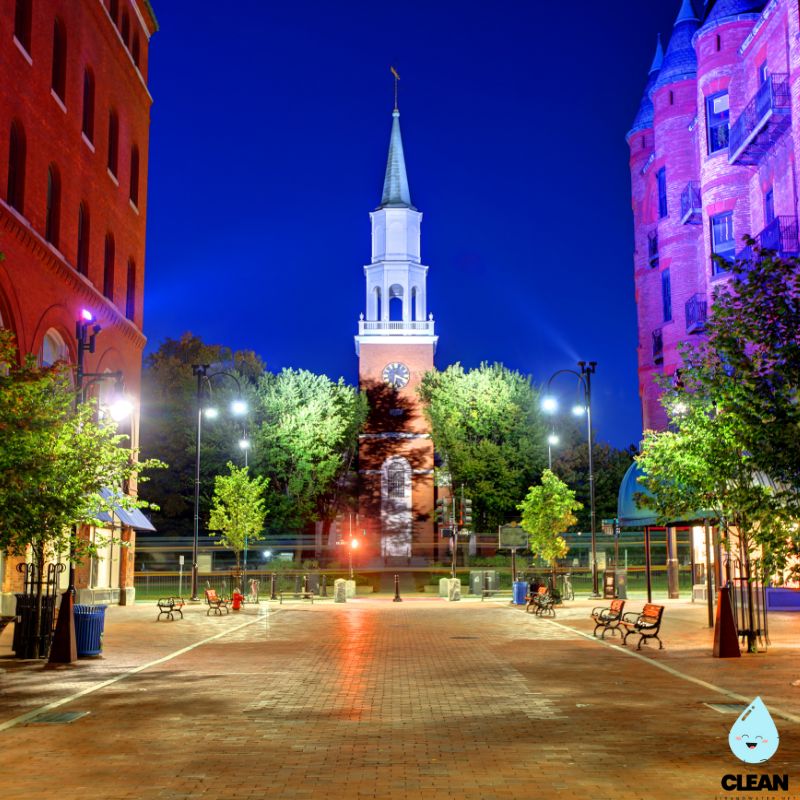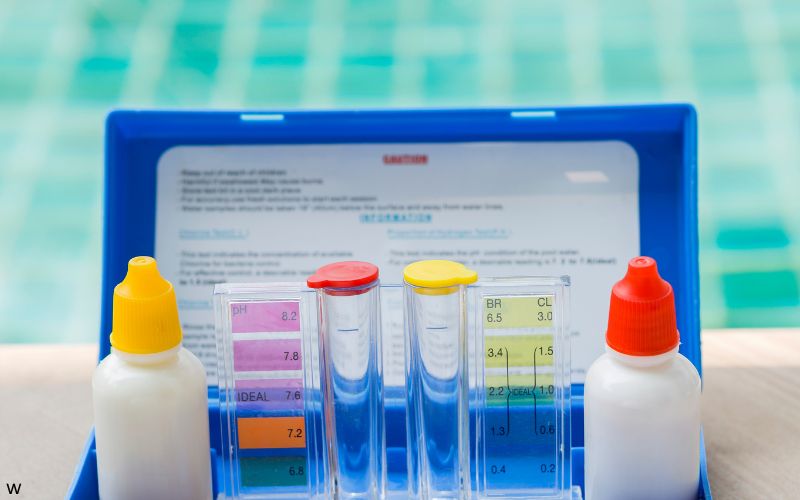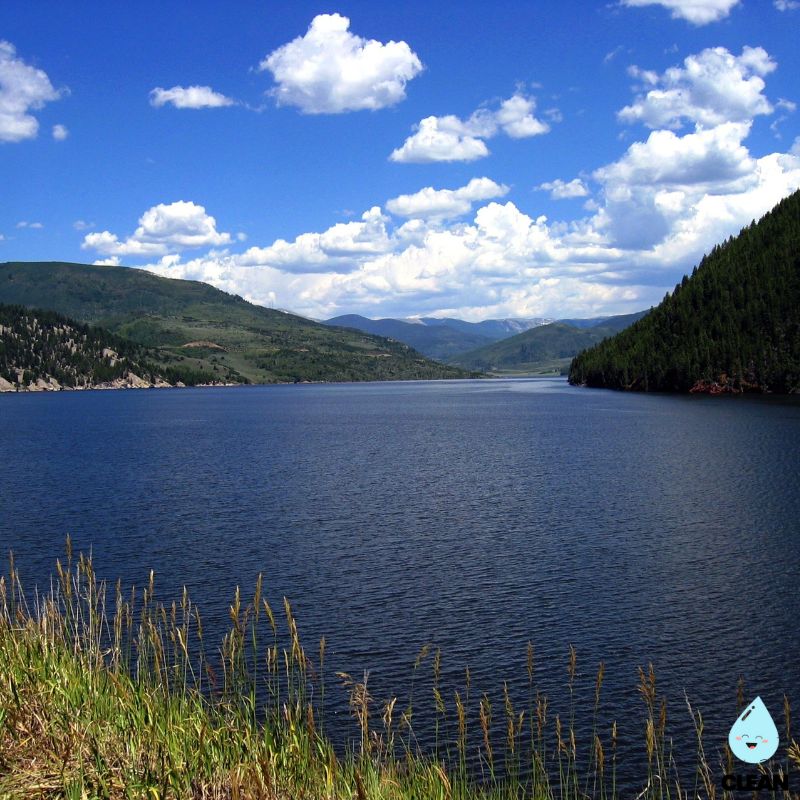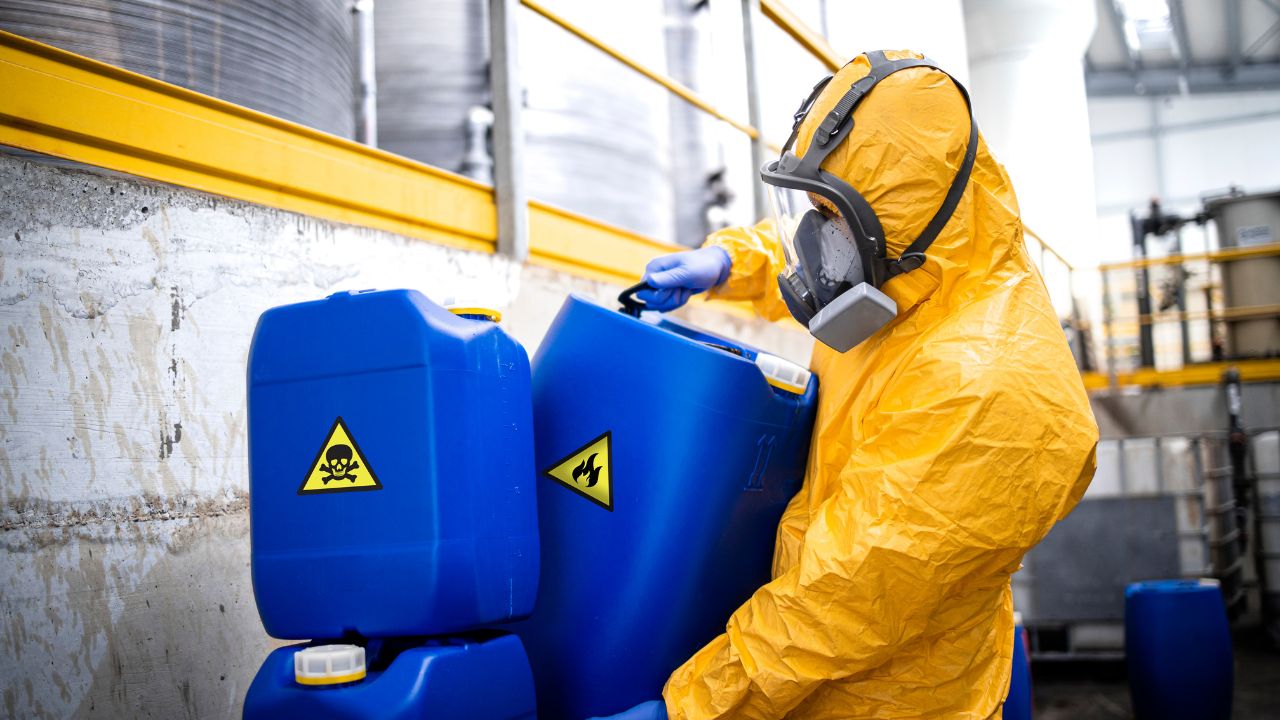Burlington Vermont Water Quality at a Glance
minor concerns
Is Burlington Vermont Water Safe to Drink?
Generally Yes – Burlington’s water meets all federal standards and shows no PFAS detection in recent testing. The Lake Champlain source provides high-quality raw water. Minor concerns include disinfection byproducts (trihalomethanes and haloacetic acids) that form during chlorination treatment, though levels remain below regulatory limits.
⚠️ Minor Concerns for Burlington Residents
- Disinfection Byproducts: Total trihalomethanes (60 ppb) and haloacetic acids (34 ppb) from chlorination treatment
- Vermont PFAS Context: While Burlington shows no PFAS, ~50 Vermont water systems statewide exceed standards
- Lead Potential: Possible lead exposure from older home plumbing (pre-1985 solder), though no lead service lines remain
- Lake Vulnerability: High watershed-to-water ratio makes Lake Champlain more susceptible to land-use impacts
Read the full report below for detailed analysis, local data, and actionable recommendations for Burlington residents.
Burlington – Vermont – Water Quality Report 2025: PFAS Testing, Infrastructure Concerns & Safety across your city
Burlington Water Resources serves approximately 50,000 residents across Vermont’s largest city. The utility operates the city’s water distribution system and receives treated water from the Champlain Water District, which provides water sourced from Lake Champlain to the greater Burlington metropolitan area. Burlington’s water system includes distribution networks, aging infrastructure requiring significant upgrades, and treatment facilities that process water sourced from Lake Champlain through sophisticated surface water treatment processes.
Burlington’s drinking water comes from Lake Champlain, sourced through an intake located 4,200 feet offshore and 45 feet below the surface (not 75 feet as sometimes reported). The water undergoes comprehensive treatment at Burlington’s own water treatment facility on the waterfront, which dates back to 1908 with modern upgrades. The city has been serving residents since 1867 and maintains high treatment standards. Burlington faces ongoing challenges with infrastructure modernization, with voters recently approving significant bond funding for system upgrades, including replacement of aging facilities dating back to the 1860s.

Burlington Water Quality: Current Status (2024-2025)
Latest Testing Results
- Lead and Copper Compliance: Burlington Water remains in full compliance with EPA regulations for lead and copper in drinking water, with the city completing its service line inventory in 2024 showing no known lead service lines in the system.
- Federal Compliance: For the latest quarter assessed by EPA (April-June 2024), Burlington’s tap water meets all federal health-based drinking water standards and regulatory requirements.
- Quality Monitoring: Burlington conducts comprehensive water quality testing, maintaining transparency through annual Consumer Confidence Reports and processing 1.365 billion gallons annually with an average daily flow of 3.742 million gallons per day.
Water Sources
- Lake Champlain: Primary source accessed through Burlington’s own intake pipe located 4,200 feet offshore and 45 feet below the water surface, strategically positioned to avoid surface contamination.
- Surface Water Protection: Burlington updated its Source Water Protection Plan in 2020 to identify threats within the watershed and develop specific protection measures for Lake Champlain.
- Lake Characteristics: Lake Champlain’s 19:1 watershed-to-water ratio makes it more vulnerable to land use impacts compared to the Great Lakes’ 3:1 ratio, requiring careful watershed management.
Advanced Treatment Technology
- Burlington Water Treatment Plant: Historic facility on the Burlington waterfront utilizing multi-barrier treatment approach including coagulation, flocculation, sedimentation, filtration through anthracite coal and sand, and disinfection processes.
- Partnership for Safe Water: Burlington participates in EPA’s Partnership for Safe Water program, demonstrating commitment to superior water quality through voluntary optimization of treatment processes.
- Corrosion Control: Advanced corrosion control treatment using zinc orthophosphate to prevent lead and copper leaching from internal plumbing systems in customer homes.
Infrastructure Modernization
- Historic Infrastructure Upgrades: Voters approved water infrastructure bonds in March 2025, including replacement of the reservoir pump station dating to 1868 and comprehensive system modernization to improve reliability.
- System Expansion: Upgrades include replacing 900 feet and relining 2,500 feet of water mains in 2023, with continued infrastructure improvements planned to accommodate Burlington’s growth.
- Smart Infrastructure: Implementation of modern monitoring systems and replacement of aging distribution infrastructure to improve system reliability and water quality management.
Customer Protection Initiatives
Burlington Water Resources provides comprehensive customer support including water quality testing information and utility customer assistance programs for qualifying households. The city maintains transparency through regular water quality reporting and public education about Lake Champlain source protection. Burlington’s commitment to water quality includes proactive monitoring for emerging contaminants and participation in voluntary cyanotoxin monitoring during summer months when blue-green algae may be present. The infrastructure investments demonstrate the community’s dedication to maintaining safe, reliable drinking water while addressing future challenges including climate change impacts, population growth, and evolving water quality standards.
Recommendations for Burlington Residents

Test Your Water
Contact Burlington Water Resources at (802) 863-4501 or water-resources@burlingtonvt.gov for water quality questions. Complete lead tap sampling data is available for review upon request, especially important for homes built before 1985 when lead solder was commonly used.

Protect Lake Champlain
Support source water protection by participating in Lake Champlain conservation efforts, properly disposing of household chemicals, and following stormwater management practices to prevent pollution runoff into the lake’s vulnerable watershed.

Consider Home Filtration
While Burlington’s water meets all standards, homes with older plumbing may benefit from NSF-certified filters for additional protection against disinfection byproducts and any potential contaminants from internal plumbing systems.

Stay Informed About PFAS
Monitor Vermont Department of Environmental Conservation updates on PFAS regulations and testing. While Burlington’s water shows no PFAS detection in recent testing (2019, 2020, 2023), stay informed about statewide efforts to address these emerging contaminants affecting other Vermont communities.

Report Issues
Contact Burlington Water Resources at (802) 863-4501 for water main breaks, pressure problems, or quality concerns. For after-hours emergencies, the city provides 24/7 response for critical water system issues.
Frequently Asked Questions
Is Burlington’s tap water safe to drink?
Yes, Burlington’s tap water meets all federal and state drinking water standards. The water comes from Lake Champlain and undergoes comprehensive treatment at Burlington’s waterfront treatment facility, which has been serving the community since 1867.
Burlington participates in EPA’s Partnership for Safe Water program, demonstrating commitment to water quality optimization. The intake system at 4,200 feet offshore and 45 feet below the surface provides protection from surface contamination. Regular testing and monitoring, including over 600 annual samples for microbial contaminants, ensure continued compliance with all health-based standards.
What is Burlington doing about aging infrastructure?
Burlington voters approved water infrastructure bonds in March 2025 to address critical aging infrastructure needs, with water bills potentially increasing up to 89% between 2025 and 2030:
Key investments include replacement of the reservoir pump station dating to 1868 and comprehensive system modernization. In 2023, Burlington replaced 900 feet and relined 2,500 feet of water mains, with continued improvements planned for 2024.
These investments will modernize treatment facilities, improve system reliability, and support housing growth. The city is working to enhance affordability programs to minimize customer impacts while securing additional funding sources for essential upgrades.
Does Burlington have lead in its water system?
Burlington Water Resources completed its comprehensive service line inventory in 2024 and found no known lead service lines in the system:
• No lead service lines: The utility has no record of active lead service lines in its service area
• Corrosion control: Burlington adds zinc orthophosphate to prevent lead and copper leaching from internal plumbing systems
• Regulatory compliance: The city remains in full compliance with EPA Lead and Copper Rule requirements
• Testing available: Complete lead tap sampling data is available for review upon request, especially for homes built before 1985
Lead in samples can only come from historic lead/tin solder used to join copper pipes or plumbing fixtures until around 1985, as there are no known lead water services in Burlington.
What about PFAS contamination in Vermont?
PFAS (“forever chemicals”) have been a concern in some Vermont communities, but Burlington’s water supply shows different results:
Burlington’s Status:
• Burlington’s testing shows “None detected” for all five regulated PFAS compounds in recent tests (2019, 2020, 2023)
• The deep-water intake at 4,200 feet offshore provides protection from potential PFAS contamination sources
Statewide Context:
• Vermont has regulated PFAS in public drinking water since 2019, ahead of federal requirements
• New EPA regulations in 2024 require additional monitoring and treatment for PFAS nationwide
• About 20 Vermont public water systems exceed current state PFAS standards, with an additional 30 systems exceeding new federal standards
• Federal funding of $8-9 million annually for five years is available to help Vermont communities address PFAS
Quality News About Your Water
Get the comprehensive water quality news coverage you need with our dedicated US Water News Service. From coast to coast, we deliver in-depth reporting and expert analysis on PFAS contamination, EPA regulatory changes, infrastructure developments, and emerging water safety issues affecting communities nationwide. While mainstream media only covers the biggest stories, we provide the detailed, ongoing coverage that helps you understand the full scope of America’s water challenges. Whether you’re a concerned citizen, water professional, or community leader, our daily updates and analytical insights keep you informed about the issues that matter most to public health and environmental safety.
Contaminants of Concern

Disinfection Byproducts
Source: Formed when disinfectants like chlorine react with naturally occurring organic matter in Lake Champlain source water; levels can vary seasonally with water temperature and organic content
Health Effects: Long-term exposure to elevated levels may increase risk of certain cancers and potentially affect liver, kidney, and reproductive health
Current Status: Burlington’s 2023 testing shows total trihalomethanes at 60 ppb (range 37-84 ppb) and haloacetic acids at 34 ppb (range 0-43 ppb), both below EPA limits but detected by independent testing EPA Limits: 80 ppb for total trihalomethanes (TTHMs) and 60 ppb for haloacetic acids (HAA5)

PFAS Compounds
Source: Per- and polyfluoroalkyl substances from industrial processes, firefighting foams, and consumer products that can contaminate surface and groundwater sources
Health Effects: Research links PFAS exposure to cancers, liver and heart problems, immune system impacts, and developmental damage to infants and children
Current Status: Burlington’s water shows “None detected” for all five regulated PFAS compounds (PFOA, PFOS, PFHxS, PFHpA, PFNA) in recent testing (2019, 2020, 2023) due to deep-water intake protection; Vermont regulates PFAS since 2019 with new federal standards effective 2024 Regulatory Updates: EPA finalized first-ever national PFAS drinking water standards in April 2024
Please read – our information
The information presented on cleanairandwater.net is compiled from official water quality reports, trusted news sources, government websites, and public health resources. While we strive for accuracy and thoroughness in our presentations, we are not scientists, engineers, or qualified water quality professionals.
Our mission is to present water quality information in an accessible, real-world format that helps people understand what’s in their water and make informed decisions about their health and safety. We believe that complex environmental information should be available to everyone in a format that’s easy to understand.
We make every effort to ensure our content is current and accurate, but we cannot guarantee that all information is complete or error-free. This website should not replace official communications from your local water utility or health department. We always recommend consulting official sources for the most up-to-date information regarding your specific water system.
Clean Air and Water is not liable for any unintentional errors, omissions, or outdated information. The content on this site is provided for informational purposes only and should not be considered professional advice.


